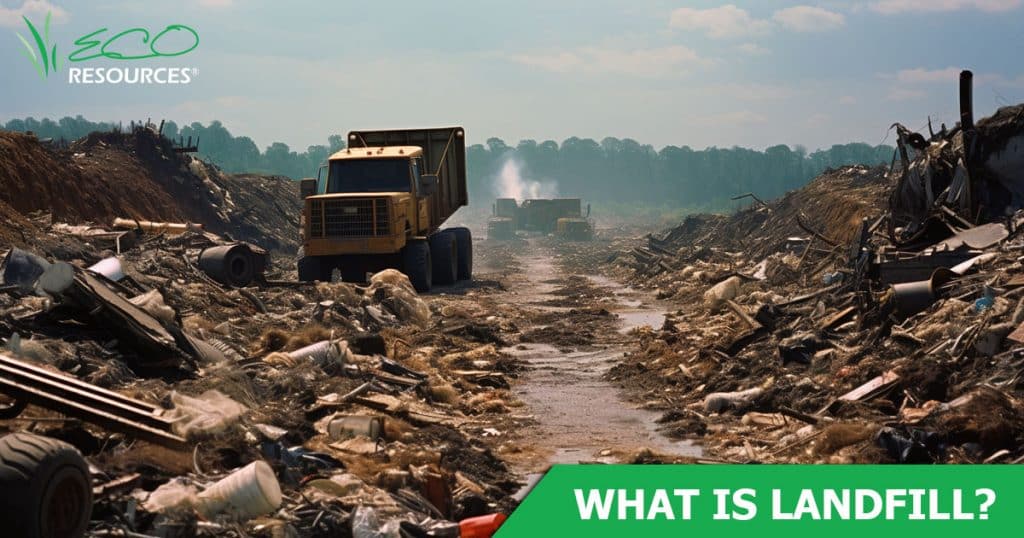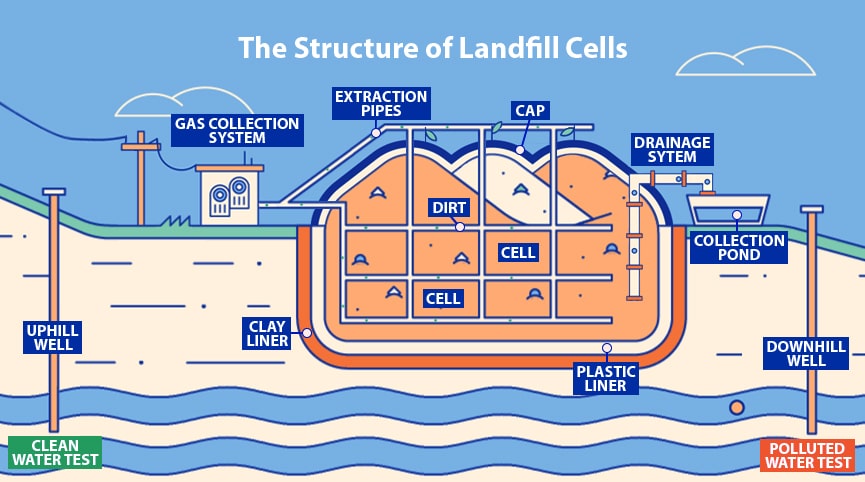

Landfills. We’ve all heard of them. But what are they really? And why are they so important?
When you think of a landfill, you might picture a giant hole filled with rubbish. But there’s a lot more to it than that. A landfill is a carefully engineered structure. It’s designed to safely handle waste that we can’t recycle or compost.
Landfills are like the final destination for waste. They’re the place where we put the stuff that we can’t use anymore. This could be anything from household rubbish to industrial waste. But it’s not just a case of dumping it and forgetting about it. There’s a whole process involved.
Building a landfill is not as simple as digging a hole and filling it with waste. It’s a complex process that requires careful planning, design, and engineering.
It starts with choosing a suitable location. The site must be safe for the environment and the community.
Next, engineers design the landfill. They plan out the structure, including the layout of the cells. Each cell is lined with layers of material to protect the environment.
Before construction begins, the project must be approved by regulatory authorities. They check the plans and assess the potential impacts.
Once approved, construction starts. The site is prepared, and the cells are built. After construction, the landfill is ready to accept waste. But the work doesn’t stop there. Landfills need ongoing management and monitoring to ensure safe operation.
So, as you can see, building a landfill is a complex and carefully managed process. It’s all about ensuring that we can dispose of our waste in a way that’s safe and sustainable for our environment.
A well-structured landfill is usually divided into sections. These are called “cells”. Each cell is lined with multiple layers. These layers are there to protect the environment. They stop any nasty stuff from the waste seeping out into the surrounding soil or water.
Inside each cell, the waste is packed down tightly. This helps to save space. It also helps to speed up the breakdown of the waste. As the waste breaks down, it produces a liquid called leachate. This liquid is collected and treated to make sure it’s safe.
But it’s not just liquid that’s produced. The waste also gives off gas. This might sound like a bad thing, but it can actually be put to good use. The gas can be collected and used to generate energy. So, even though the waste in a landfill can’t be recycled, we can still get some use out of it.

The structure of landfill cells involves several key components designed for safe waste isolation and environmental protection. Here’s a summary of the structure:
These stations are to test surrounding water for leachate chemicals to ensure no contamination.
This structure reflects modern landfill design’s focus on environmental safety and sustainability, significantly improving over the unregulated dumps of the past.

Landfills are a necessary part of our waste management system, but they can have significant impacts on the environment.
One of the main environmental impacts of landfills is the production of landfill gas. As waste breaks down, it produces a mix of gases, mainly methane and carbon dioxide. These gases can contribute to climate change if they’re not properly managed. However, many modern landfills capture this gas and use it to generate electricity, turning a potential problem into a solution.
Landfills can also produce a liquid called leachate. This is a mix of water and dissolved or suspended materials from the waste. If leachate leaks out of the landfill, it can contaminate soil and water sources. To prevent this, modern landfills are designed with special liners and leachate collection systems.
Another potential impact of landfills is on local wildlife. Landfills can attract scavengers like birds and rodents, which can disrupt local ecosystems. To mitigate this, many landfills implement wildlife management plans.
Finally, landfills can also have visual and odour impacts on local communities. To manage this, landfills are often located away from residential areas and use various methods to control odour.
Following the journey of waste, it’s clear that managing landfill waste is a complex task. This highlights the crucial role of waste recycling companies. They help reduce the amount of waste going to landfills, making our waste management more sustainable and environment-friendly.
Understanding these impacts gives us a clearer picture of what we’re dealing with when we talk about landfill waste.
Landfill waste is the stuff we can’t recycle or compost. It includes household rubbish, construction materials, and sometimes hazardous stuff like asbestos.
Household rubbish is a big part of landfill waste. It’s the stuff we throw away every day. Things like food scraps, packaging, and old furniture.
Industrial and construction waste also ends up in landfills. This includes things like concrete, bricks, and metal. Commercial businesses contribute too, with waste like paper, food waste, and packaging.
Australia’s waste management system is vast and complex, handling the 48 million tonnes of solid waste materials generated each year. The system is made up of 2846 waste management facilities. This includes transfer stations, resource recovery facilities, and landfills.
According to National Waste Reporting 2013, landfills are a significant part of this infrastructure. There are 1168 operational landfill sites across the country. These landfills receive around 20 million tonnes of waste each year, accounting for approximately 40% of Australia’s total waste.
These landfills range in size from small trench-based facilities receiving less than 1000 tonnes per year, to large, engineered facilities that can handle more than 100,000 tonnes per year.
Interestingly, the majority of waste disposal, about 75%, takes place at large landfills. These landfills are not just for waste disposal. Many of them also undertake pre-disposal resource recovery activities. This includes composting garden organics, sorting and recycling construction and demolition waste, and collecting household recyclable materials.
Australia has a system in place to encourage waste reduction and recycling, known as the landfill levy. This is a tax applied to each tonne of waste sent to a landfill, making it more cost-effective to recycle or compost waste rather than sending it to landfill.
Despite the efforts to reduce waste and increase recycling, landfills remain a necessary part of Australia’s waste management system. They provide a solution for managing the waste that we can’t currently recycle or compost.
However, with ongoing research and development, the hope is that we can continue to reduce the amount of waste that ends up in our landfills.

Kristy Sumich is the owner and director of Eco Resources, a prominent waste management and recycling service in Western Australia. With deep industry knowledge and hands-on operational experience, Kristy is dedicated to providing sustainable solutions in waste management.
All rights reserved © Eco Resources. Website by Selling Online Made Simple. Sitemap.